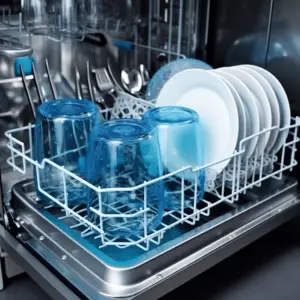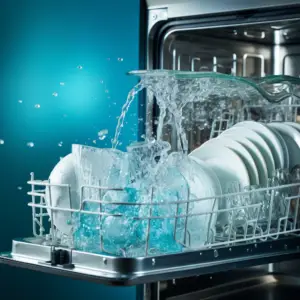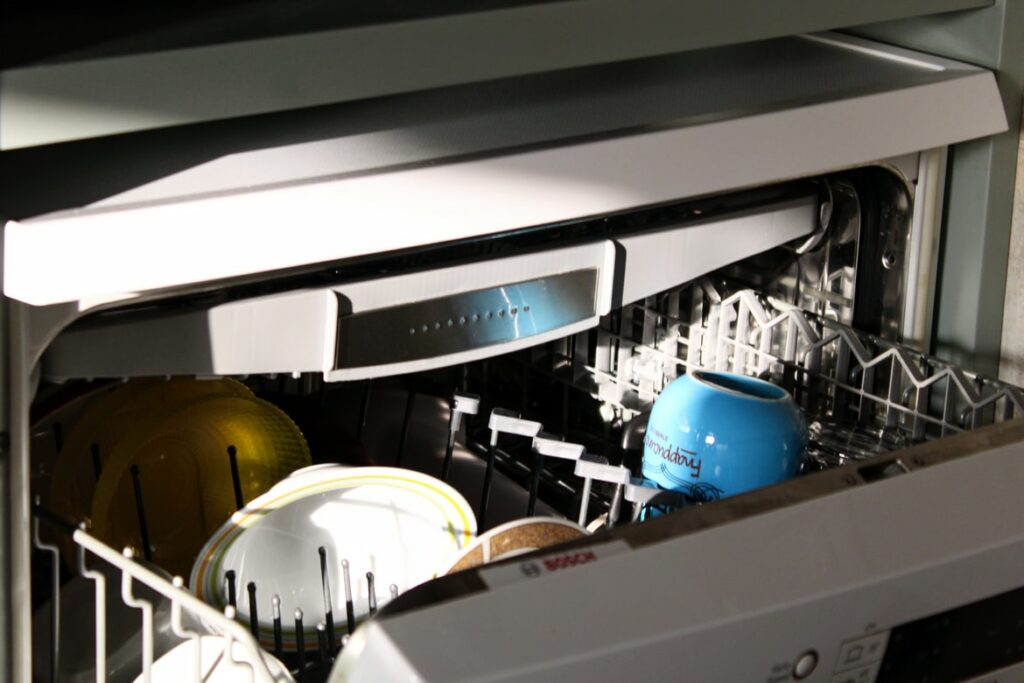Rinse Aid, We all enjoy a sumptuous hearty home-cooked meal. Some of us enjoy the art of cooking a sumptuous hearty home-cooked meal but very few if any, enjoy the chore of washing up after cooking and enjoying a well-executed home-cooked meal.
In fact the bigger the meal the less enjoyable the task of cleaning up after enjoying your food. Having a dishwasher undoubtedly makes this chore markedly less taxing and for some people even enjoyable.
Table of Contents
Dish soap

It, therefore, goes without saying that what you want most out of your dishwasher is excellent dishwashing performance and this goes hand in hand with proper use of the machine.
The right products for your needs are a prerequisite to great results as well. A tough dishwashing soap effective on stains and grease coupled with a good rinse aid’s is crucial especially for the long-term condition of both your dishes and your dishwasher.
One of the most common errors when using a dishwasher is putting dish soap in the rinse aid dispenser. While there is no real danger of ruining your machine in a single wash, the dish soap will lather up during the rinse cycle and get dried up on your dishes.
As soon as you open the dishwasher to retrieve your clean dishes, you will notice that something has gone very wrong. If you accidentally put dish soap in the rinse aid dispenser, this is what you should do,
How to get dish soap out of dishwasher rinse aid dispenser
- If you haven’t turned on your dishwasher or see the error while cleaning, turn it off first.
- Place each dish in the sink or basin after removing them from the machine. Since they are soap-coated, don’t allow them slip and break, which would make dishwasher glass cleaning more difficult.
- Scoop foam or suds into a plastic bowl after removing all plates from the dishwasher. Remove as much as possible.
A lot of this froth should remain in the dishwasher. Wipe clean and dry the residual foam from your machine using table cloths or paper towels. - Using a syringe, suction out as much dish soap as possible from the rinse aid dispenser. A turkey baster can also be used for this.
- If you do not have either, use paper towels or a table cloth to get as much of the dish soap as you can reach out of the rinse aid dispenser.
- Depending on the shape and depth of the dispenser, this may not be possible without a syringe and instead what you have to do is extract the entire dispenser and rinse it out manually. Most dispensers can come off easily but if not, you may have to get the syringe from the hardware store.
Dishwasher rinse aid dispenser
- Once thoroughly wiped or suctioned out, the rinse aid dispenser will still have dish soap residue which can be handled using a small amount of white vinegar.
- Pour a cupful of vinegar into the rinse aid dispenser. Add a generous amount of salt. You can measure this using the palm of your hand. A palm of salt should suffice.
- Run your dishwasher once and observe whether dish soap foam will form again. One round of this should be enough if you got as much of the dish soap as possible out of the rinse aid dispenser but if not, simply put vinegar and salt again and run the dishwasher once more.
- If no foam forms, then your rinse aid dispenser is clear. If foaming occurs, repeat the vinegar and salt rinse until no more foam forms when you do this.
- Put rinse aid in the rinse aid dispenser and return your dishes into the dishwasher. Clean as usual.
What is the purpose of rinse aid?

A surfactant is a rinse aid. Surfactants lower liquid surface tension. Rinse aid breaks water surface tension, making dishes slide off after rinsing. This dries the dishes and prevents marks, spots, and streaks from drying in the washer.
If glassware has a poor luster, use rinse aid. The dull shine is generated by water adhering to the glass as it dries instead of sliding off. Rinse aid on stained glassware and all dishes will remove this unattractive gloss.
Hard water makes rinse assistance even more vital. Hard water contains additional elements and chemicals that attach fast to dishes even when cleaned completely due to water surface tension. The strong surface tension of water causes droplets to adhere to your plates, allowing other substances to stain them. Ripe aids for hard water help reduce the surface tension and dissolve the chemicals in the water, removing stains and streaks from dishes.
Is there an alternative to rinse aids?
While rinse aids are the best way to protect dishes from sustaining this particular kind of stains, some may find that they do not wish to use these products if they can be avoided, mostly for environmental reasons.
If this is the case, you can pour white vinegar into the rinse aid dispenser for one cycle every few weeks which should clear any forming stains or streaks. Vinegar cannot be used continuously but it should resolve the problem and offer an efficient alternative to rinse aids.


